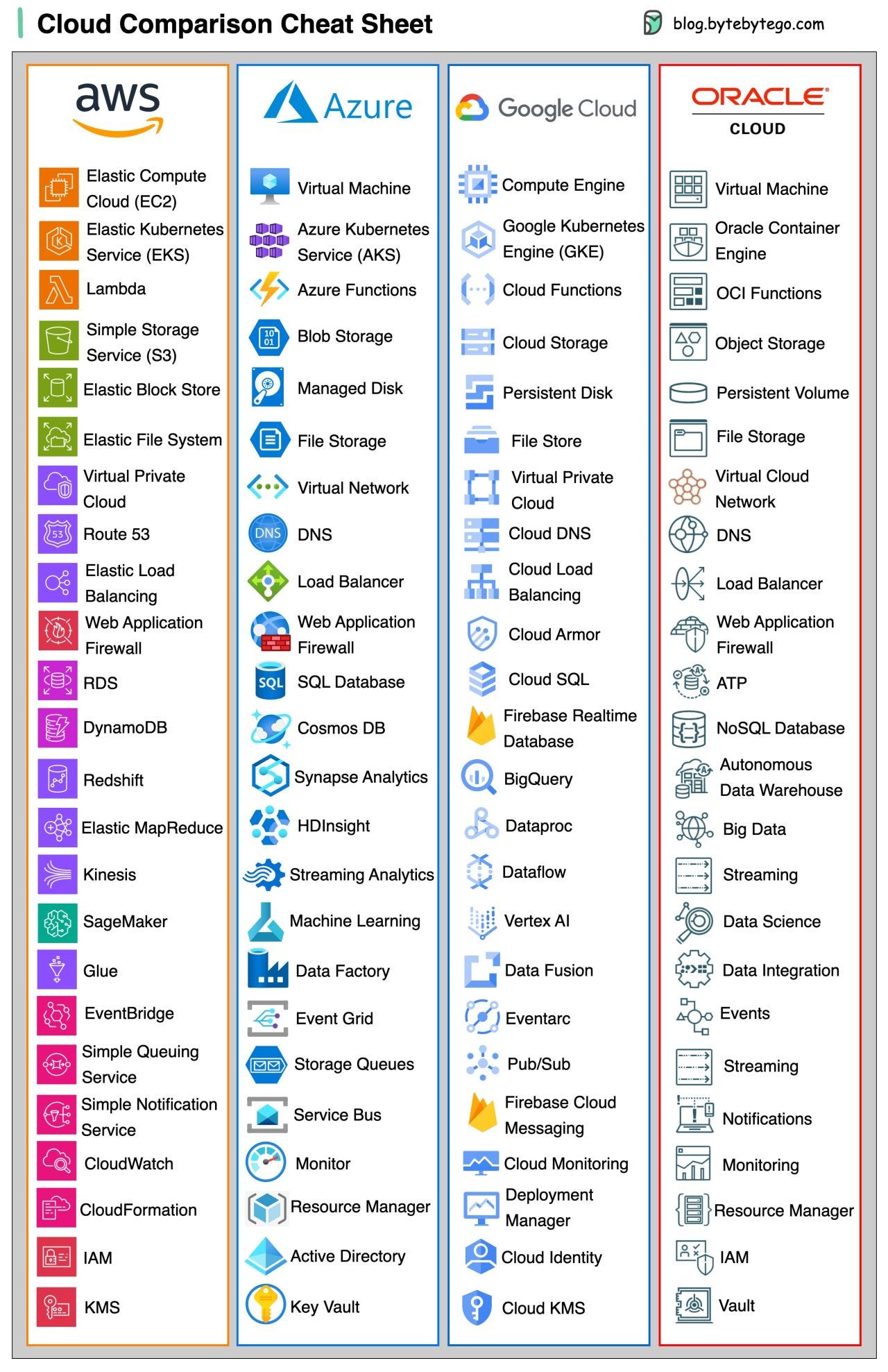Cloud
Introduction to Cloud
- Cloud computing has revolutionized the way businesses and individuals store, manage, and access data and applications.
- With the advent of cloud service providers, such as Microsoft Azure, Amazon Web Services (AWS), and Google Cloud Platform (GCP), organizations can now leverage the power of the cloud to scale their operations, improve efficiency, and reduce costs.
Services Offered:
IaaS (Infrastructure as a Service):- Provides virtualized computing resources over the internet, such as servers, storage, and network infrastructure.
PaaS (Platform as a Service):- Provides a platform allowing customers to develop, run, and manage applications without the complexity of building and maintaining the infrastructure.
SaaS (Software as a Service):- Delivers applications over the internet on a subscription basis, eliminating the need to install and run the application on individual computers.
Types of Cloud:
Private Cloud:- A cloud infrastructure operated solely for a single organization, whether managed internally or by a third-party, and hosted either on-premises or remotely.
Public Cloud:- A cloud infrastructure that provides services over the internet and is open for public use, owned and operated by cloud service providers like Amazon Web Services(AWS), Google Cloud, or Azure.
Hybrid Cloud:- A cloud infrastructure that combines both private and public clouds, allowing data and applications to be shared between them for greater flexibility and optimization of your infrastructure.
Multi-Cloud:- A strategy that uses multiple cloud services from different providers, offering increased flexibility and mitigating the risk of vendor lock-in.
Community Cloud:- A cloud infrastructure shared among several organizations with common concerns (e.g., mission, security requirements, policy), typically managed by a third-party or within one of the organizations in the community.
Cloud Comparison CheatSheet
Benefits
Scalability: Cloud services allow businesses to easily scale their resources up or down based on demand.Low Capex: Less upfront investments in hardware and infrastructure.Cost-effectiveness: Businesses only pay for the resources they use, eliminating the need for large capital expenditures on hardware and software.Less Maintainance: Cloud providers handle the maintenance and management of the underlying infrastructure, reducing the burden on IT teams and freeing up resources to focus on core business activitiesSecurity: Cloud service providers invest heavily in robust security measures to ensure data is protected from unauthorized access and potential breaches.Reliability: Cloud providers offer redundant infrastructure and data backups, minimizing the risk of data loss and ensuring high availability of services.Seamless Collaboration: Cloud computing enables seamless collaboration and remote access to data and applications.
To learn more about cloud computing and the services offered by Microsoft Azure, Amazon Web Services(AWS), and Google Cloud Platform(GCP), check out the following resources:
